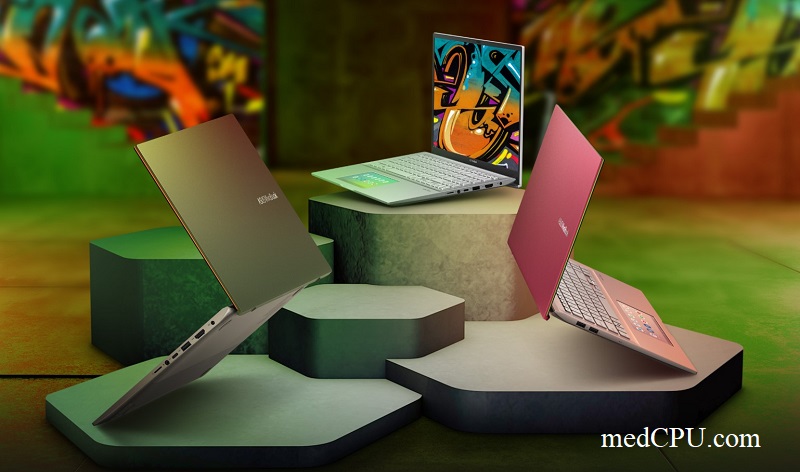13 Vs 15 Inch Laptop: Which Is Better 2023?
Comparison Table – 13 vs 15 Inch Laptop
| Feature | 13-inch Laptop | 15-inch Laptop |
|---|---|---|
| Display Size | Typically around 13 inches | Typically around 15 inches |
| Portability | Generally more portable and lightweight | Slightly bulkier and heavier |
| Screen Resolution | Typically ranges from Full HD (1920×1080) to 4K (3840×2160) | Same as 13-inch, but can offer higher resolution options |
| Keyboard and Touchpad Size | Smaller keyboard and touchpad | Larger keyboard and touchpad |
| Performance | Generally sufficient for everyday tasks and light multitasking | Can offer more power and performance options, suitable for demanding tasks and multitasking |
| Battery Life | Tends to have better battery life due to a smaller display | Slightly lower battery life due to a larger display and potentially more powerful hardware |
| Price | Often less expensive compared to larger counterparts | Usually more expensive than 13-inch laptops with similar specifications |
Display
When it comes to choosing between a 13-inch and a 15-inch laptop, one of the key factors to consider is the display size. The larger screen size of a 15-inch laptop offers several advantages.
First and foremost, it provides a more immersive viewing experience, making it ideal for multimedia consumption such as watching movies or editing photos and videos. Additionally, a bigger display allows for better multitasking capabilities, with more room to have multiple windows open side by side.
However, there are also benefits to opting for a smaller 13-inch laptop display. One major advantage is portability. With its compact size and lighter weight, a 13-inch laptop is easier to carry around in your backpack or handbag without weighing you down.
This makes it an excellent choice for frequent travelers or those who work on the go.
Ultimately, the decision between a 13-inch and 15-inch laptop display comes down to personal preferences and use cases. If you prioritize portability and value being able to easily take your laptop anywhere you go, then the smaller form factor may be the way to go.
On the other hand, if you require a larger screen real estate for content creation or simply enjoy the immersive experience offered by bigger displays, then opting for a 15-inch option might be worth considering.
Price
When considering the price of a 13 vs 15-inch laptop, it’s important to weigh your budget against your specific needs. Generally, 13-inch laptops tend to be more affordable compared to their larger counterparts.
This is because they typically come with less powerful hardware and fewer features. However, if you require a laptop with higher performance capabilities such as gaming or video editing, you may need to invest in a pricier 15-inch model.
In addition, it’s worth noting that certain brands and models can also affect the price range within each size category. For instance, Apple’s MacBook Air line offers both 13 and 15-inch options at different price points.
Ultimately, determining which size suits your requirements while staying within your budget will help you make an informed decision when it comes to selecting the right laptop for you.

Screen Real Estate
When it comes to screen real estate, the size of your laptop can have a significant impact on your overall experience. A 15-inch notebook typically offers a more prominent display compared to its 13-inch counterpart.
This means you’ll have more space to work with, whether you’re editing documents, designing graphics, or simply browsing the web. The additional screen real estate allows for better multitasking and viewing multiple windows side by side without feeling cramped.
It’s especially advantageous if you frequently need to compare documents or reference information from one window to another. However, keep in mind that a larger screen also means a bulkier laptop and potentially heavier weight, which could affect portability if that is an important consideration for you.
In terms of productivity and efficiency, having more screen real estate can make a noticeable difference in how quickly tasks are completed. With a larger display area available at your disposal, you can easily have multiple applications open simultaneously without constantly toggling back and forth between them.
This is particularly beneficial for professionals who rely heavily on software programs such as video editors or designers who require ample workspace for their projects. Additionally, watching movies or streaming content becomes even more immersive on a bigger screen since you’ll have more room for visuals to unfold seamlessly.
Ultimately, whether 13 inches or 15 inches is right for you will depend on your specific needs and priorities when it comes to balancing between portability and optimal viewing experiences.
Conclusion
After considering all the factors, it is clear that choosing between a 13-inch and a 15-inch laptop ultimately depends on your specific needs. If portability and lightweight design are important to you, then the 13-inch laptop may be the better choice.
However, if you require more screen real estate for tasks like programming or graphics-intensive work, then the 15-inch laptop offers a significant advantage. Consider your priorities and make an informed decision based on what will best suit your lifestyle and professional requirements.
Related Posts:

Eyal Ephrat serves as the co-founder and CEO of medCPU.com, where technology is making significant strides in the field of medicine. Through his experience in purchasing PC and laptop equipment and various other tech products, Eyal Ephrat contributes valuable insights to medCPU’s mission.
